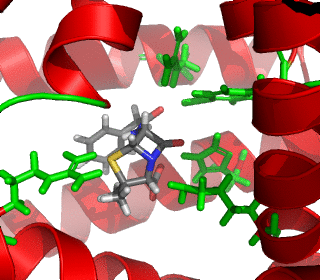


Thus, there is great need for computational methods that predict new interactions and produce high-resolution structural modeling of PPIs.

Despite significant efforts in traditional structural biology and the structural genomics projects that aim at high-throughput complex structure determination, the latest statistics from 3did database show that only 7% of the known protein interactions in humans have an associated experimental complex structure. To understand these processes the structure of the protein complex is essential. Protein-Protein Interactions (PPI) are involved in almost all biological processes. The funders had no role in study design, data collection and analysis, decision to publish, or preparation of the manuscript.Ĭompeting interests: The authors have declared that no competing interests exist. This is an open access article distributed under the terms of the Creative Commons Attribution License, which permits unrestricted use, distribution, and reproduction in any medium, provided the original author and source are credited.ĭata Availability: All relevant data are within the paper and its Supporting Information files.įunding: This work was funded by the Swedish Research Council (621-2012-5270) and the Swedish e-Science Research Center. Received: FebruAccepted: AugPublished: August 25, 2016Ĭopyright: © 2016 Basu, Wallner. PLoS ONE 11(8):Įditor: Yaakov Koby Levy, Weizmann Institute of Science, ISRAEL DockQ is available at Ĭitation: Basu S, Wallner B (2016) DockQ: A Quality Measure for Protein-Protein Docking Models. The possibility to directly correlate a quality measure to a scoring function has been crucial for the development of scoring functions for protein structure prediction, and DockQ should be useful in a similar development in the protein docking field. Since DockQ recapitulates the CAPRI classification almost perfectly, it can be viewed as a higher resolution version of the CAPRI classification, making it possible to estimate model quality in a more quantitative way using Z-scores or sum of top ranked models, which has been so valuable for the CASP community. An average PPV of 94% at 90% Recall demonstrating that there is no need to apply predefined ad-hoc cutoffs to classify docking models. By using DockQ on CAPRI models it is possible to almost completely reproduce the original CAPRI classification into Incorrect, Acceptable, Medium and High quality. Here, we present DockQ, a continuous protein-protein docking model quality measure derived by combining F nat, LRMS, and iRMS to a single score in the range that can be used to assess the quality of protein docking models. This classification has been useful in CAPRI, but since models are grouped in only four bins it is also rather limiting, making it difficult to rank models, correlate with scoring functions or use it as target function in machine learning algorithms. This is also the reason why the so called CAPRI criteria for assessing the quality of docking models is defined by applying various ad-hoc cutoffs on these measures to classify a docking model into the four classes: Incorrect, Acceptable, Medium, or High quality. a model with relatively poor LRMS (>10Å) might still qualify as 'acceptable' with a descent F nat (>0.50) and iRMS (<3.0Å). These quality measures quantify different aspects of the quality of a particular docking model and need to be viewed together to reveal the true quality, e.g. The state-of-the-art to assess the structural quality of docking models is currently based on three related yet independent quality measures: F nat, LRMS, and iRMS as proposed and standardized by CAPRI.


 0 kommentar(er)
0 kommentar(er)
